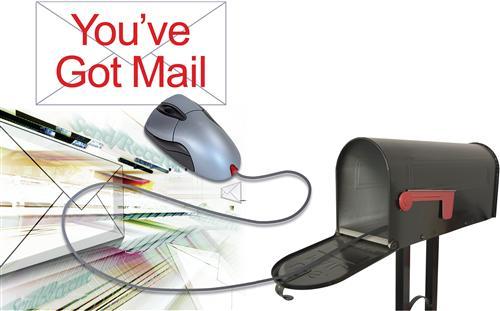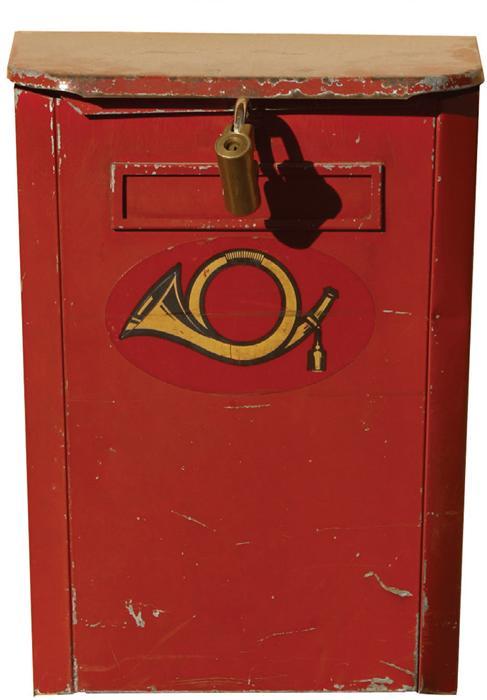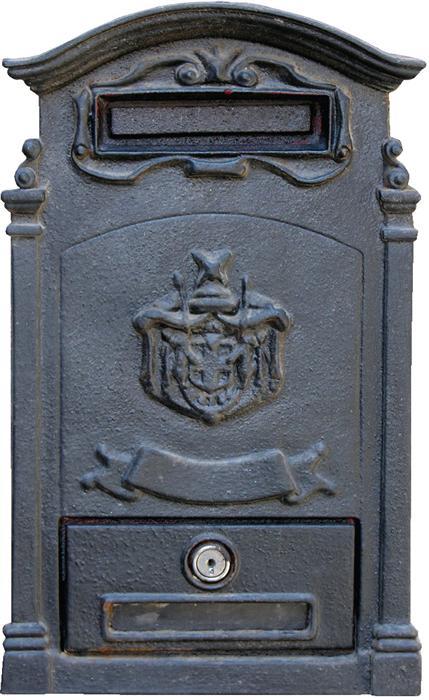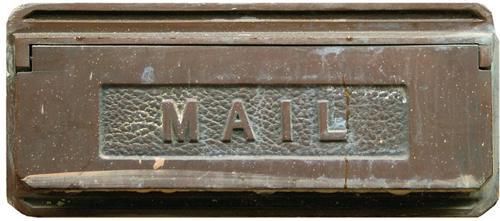Sign up for the Family Tree Newsletter Plus, you’ll receive our 10 Essential Genealogy Research Forms PDF as a special thank you!
Get Your Free Genealogy Forms
"*" indicates required fields

A few years ago, I received an e-mail that began, “Let me introduce myself. I’m Sheryl, your aunt Alice’s daughter.” Sheryl, it turns out, had read an article I’d written and was sending her congratulations. The last time we’d seen or heard from one another was 1960.
Sheryl’s note began the slow electronic reunification of our spread-out family. Mice and modems have given Sheryl and me — as well as our aunts, uncles and cousins — a chance to catch up on each other’s lives, climb the family tree and share our memories. Two aunts, born between the presidencies of Woodrow Wilson and Calvin Coolidge, have become enthusiastic residents of cyberspace, e-mailing greeting cards, party invitations and memories of their parents and grandparents. The next step in exchanging stories and memories was to create an electronic family newsletter.
If your family already has a traditional paper newsletter, you’ll appreciate the ease and immediacy of “e-publishing.” If printing and postage hassles have kept you from connecting your family with a newsletter, going the digital route makes it simple to get started. Just follow our advice to the letter.
Think ahead
Once you’ve decided to start up your own electronic family newsletter, a little upfront planning will pay off down the line. Ask yourself:
- How often do I want to publish?
- How long will the newsletter be?
- Will I be the sole writer or will I ask other family members for contributions?
- Will my newsletter have a specific focus, such as family history?
- How much time and effort am I willing to invest?
- Will I include ongoing columns on particular topics?
- What format will I use?
- What will I name my newsletter?
Most family newsletters are quarterly. But you may want to publish sporadically if you’re the sole writer, editor, publisher and chief bottle washer, and you don’t know how much time you can spare. Or you may be lucky enough to have a family so involved in your project that you can publish weekly.
Don’t want to be a solo act? E-mail your family members and ask for help. Not everyone likes to write. To get relatives excited about contributing to the newsletter, assure them you aren’t expecting Pulitzer Prize-winning prose. Let them know you’re more interested in their stories than their writing style. Someone who’s never seen a family newsletter may not know what type of information you’re after, so make it easy by listing the articles you want and a ballpark deadline for when you need them. Most of us lead busy lives, and it’s easy to forget deadlines, so send friendly e-mail reminders to those who have promised you articles.
Naming your newsletter will probably be your easiest decision. You could use your family surname, as in Hendrickson Newsletter; or be more creative, à la Climbing the Hendrickson Family Tree.
Stay on topics
After you’ve finalized a publishing schedule and a name, it’s time to write the first newsletter. You may be tempted to include everything you know in your premiere issue. But if you develop an editorial calendar — a rough outline of what topics you want to cover in each newsletter during its first year — you can make each issue shine with an interesting mix of family trivia, stories and news. Your choice of topics is almost endless, so here are a few ideas to get you started:
Vital statistics: Include the birth, marriage and death dates of a few ancestors in each issue. This gives family members an opportunity to check their own records and correspond about discrepancies.
Cultural/religious heritage: Does your family have an interesting cultural or religious heritage, such as Acadian, Palatine or Huguenot? If you’ve researched this background, share what you’ve learned in the newsletter. Your family members will be happy to learn more about their heritage. I’ve discovered some of my ancestors were Quakers, for example, and I love reading articles about that faith.
Family recipes: My family loves Grandma’s apple dumplings and Mom’s potato salad. Your relatives probably have favorites, too. Ask them to contribute their much-loved family recipes to your newsletter. Make each recipe extra special by writing a brief biography of the person associated with it.
“I remember Grandma“: Ask family members to share their memories of a specific ancestor. You’ll be surprised how each person’s recollections differ. My cousin Sheryl remembers our Grandma’s homemade grape juice and lemonade. My sister, Vicki, envisions the hollyhocks in her backyard, and Aunt Alice recalls Grandma’s snoring. But I remember her most for teaching me to play checkers.
Single-topic issues: Consider dedicating an entire issue to a single topic, such as “Our Indiana Ancestors” or “Our Civil War Roots.” These mini-biographies will help your relatives see their ancestors as real people.
Old documents: For whatever reason, my family didn’t save letters, military records, diaries or much else on paper, so I envy families that still have these mementos. If you own old documents, include excerpts in your newsletter. Depending on your format (see opposite page), you can show actual scanned pages along with transcriptions. You also could include tips to help relatives preserve their treasures for future generations.
News: Spread the word on engagements, marriages, new babies, graduations, deaths, promotions and new homes.
Genealogy research: If your family’s into genealogy, use the newsletter to share discoveries or even to split research tasks and avoid duplicating efforts. The Fletcher Family Research Bulletin, for example, contains biographies, findings from military records and excerpts from primary sources. It also connects family members who are researching the same lines.
Favorite family story: Forty years later, my family still laughs about Grandpa eating dog food and my brother falling down a sewer. What are the favorite stories that only your family can tell?
Ancestral homeland: Did your family come from a small village in France or a bustling German town? Articles and photos from relatives who’ve visited there will get your readers interested in family heritage and maybe inspire others to make the trip.
“In uniform“: This themed column is a great way to give special recognition to relatives who’ve served in the military.
Electrify your letters
You’ve notified all the relatives, made an editorial calendar and written your premiere edition. Now it’s time to share your work with the family. Using the Internet, you can publish your newsletter in one of four formats:
Text-only: Although most of today’s e-mail programs let users read messages formatted in HTML — the same coding that makes the World Wide Web work — older software might not. Your text-only newsletter would be a plain e-mail message, so you can’t jazz things up with photos, color or even italics. Because of some e-mail software limitations, lines of text should be no longer than 65 characters (that means you’ll have to manually break lines using the Return key).
But despite the design drawbacks, you’ll know even relatives with positively primeval e-mail software can read your newsletter. Another advantage: The text-only option requires the least time commitment and technical know-how. This simple format doesn’t mean you have to sacrifice sharing family photos — just attach images or include hyperlinks to Web sites with pictures.
Word processing document: You can use your word processor to type and design a newsletter with borders, color, photos and fancy type, then send it to your family members as an e-mail attachment. But before you go this route, poll your readers to make sure their e-mail software accepts attachments and they can read the format you’re going to use. If you send your newsletter as an RTF (rich text format) document, your relatives will be able to open it with just about any word processing program.
PDF is another universal file type. If you own Adobe Acrobat <www.adobe.com> or other PDF-creation software, you can convert any document, regardless of format, into a PDF file. Microsoft Office applications will let you save your document as a PDF — it’s a one-click button in the print menu. Anyone with the free Acrobat Reader can view a PDF, complete with typography and artwork. Most computers come with the Reader; it’s also available from <www.adobe.com/products/acrobat/readstep2.html>.
Web-based: Bill Norin created the Mac-Donald Newsletter on paper for 20 years. Now, his family can go online <geocities.com/heartland/pointe/9632> to read newsletters enhanced with photos and music. The MacDonald Newsletter contains articles such as “We Met on the Net” (about Norin’s Internet cousins) and excerpts from a family history Norin penned. Get inspiration for your online newsletter at Family Newsletter News <freepages.genealogy.rootsweb.com/~bruce/FamNewsNews.htm> and eSSORTMENT <pa.essortment.com/familynewslette_rbbw.htm>.
If you have a Web page or belong to a private family gathering place such as MyFamily.com <www.myfamily.com>, you can upload newsletters to the web (see box, above). But if you publish to a public site, don’t include personal details such as phone numbers or sensitive family stories.
Mailing-list newsletters: You format a mailing-list newsletter the same as a text-only e-mail newsletter, but instead of sending it from your e-mail account, you send to everyone who subscribes to a mailing list. Several companies — such as Coollist <www.coolist.com>, FreeLists <www.freelists.org>, Topica <lists.topica.com>, Zinester <www.zinester.com> and Yahoo! Groups <groups.yahoo.com> — provide this service free in exchange for tacking a small ad to the bottom of your e-mail.
Although policies vary, typically you can opt for one of three types of mailing lists: announcement-only, moderated or open. You’d probably set up the newsletter as an announcement-only list, meaning you’re the only person who can mail to the list. People may be wary about being on a list, so if you choose this option, reassure relatives they won’t get unsolicited e-mails (spam) as a result of receiving the family newsletter.
Some families use mailing lists as a discussion forum. Don Esslemont of New Zealand, set up an Esslemont mailing list so he, a Canadian cousin and other relatives scattered around the world could easily share their genealogy research. Such lists are either moderated or open. If yours is moderated, you, the list owner, need to OK every message before it’s e-mailed to list members. If the list is open, members e-mail messages directly to the list.
Free mailing list providers may offer to put you in a directory, which could connect you with family members you didn’t know existed. See if you can make your message archives members-only so the Web-surfing public can’t read them.
Regardless of the newsletter format you choose, once you’ve sent your first issue you’ll probably receive e-mails from less computer-savvy cousins, asking how to open attachments, change an e-mail address, or set up e-mail folders and filters. Welcome to electronic publishing
Plant a Family Tree on the Web
Got a lot of genealogy research to share? Publish it to a family Website for easy access by anyone, anytime. You don’t have to shell out big bucks to give your site a home, either — you can use a free Web hosting service. Internet service providers often offer their customers free Web space, too.
Your family history Website can include all kinds of information, such as GEDCOM files (the universal file format for genealogy data), old photos, Grandma’s recipes and information on the annual reunion. But no matter what you post, be sure the site has these basic elements:
1. An overview: On the site’s home page, you’ll want to include a title (or logo), a paragraph explaining what the site’s about, links to each of your main site categories and, most important, contact information for you. (If you want to keep spammers from harvesting your e-mail address, link the words e-mail me to your address instead of spelling it out. You also could insert your address as a graphic.)
2. Links: Make sure all the pages on your site link back to your home page. It’s also helpful to include links to your main categories and your e-mail address at the bottom of each page. Test the links before your pages go live.
3. Images: Pictures and other graphics aren’t required, but they break up large chunks of text and make your site more appealing. You can format Web graphics as GIF, which works best for line art, or JPEG, which is ideal for photos. Online photos should have relatively low resolution — 72 dots per inch is standard — so pages load quickly.
4. Sources: A major complaint about many genealogy Web sites is lack of proper documentation. Take advantage of your family tree software’s option to include sources and notes for your genealogical findings. Read the National Genealogical Society’s online documentation dos and don’ts at <www.ngsgenealogy.org/comstandweb.cfm>. Look to Creating Family Web Sites for Dummies by Janine Warner (IDG) for more advice.
— Allison Stacy and Dana Schmidt
From the May 2006 issue of Family Tree Magazine.
ADVERTISEMENT




